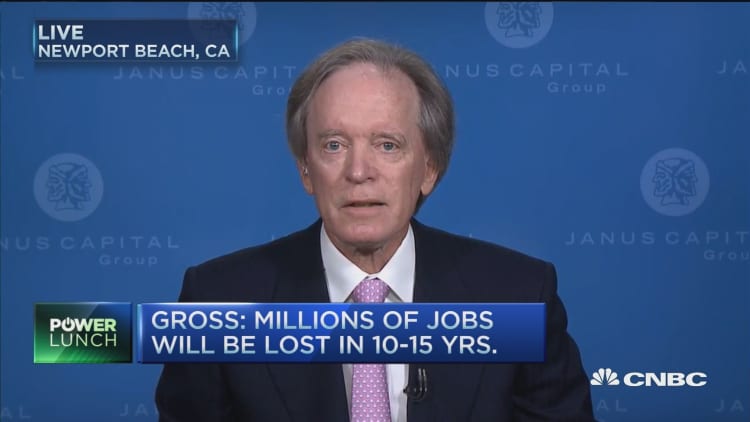
The April jobs picture could be better than current Wall Street expectations, according to Goldman Sachs economists.
That's despite a report Wednesday indicating that companies added the fewest jobs in three years. Private payrolls grew just 156,000 in April, well below the economist consensus of 195,000, according to payroll services firm ADP and Moody's Analytics.
Goldman experts, however, were unswayed by the ADP disappointment. The firm expects Friday's nonfarm payrolls report to show growth of 240,000, well above the Street expectation for 200,000 and an upward revision to Goldman's already bullish call for 225,000.
The reason: A separate report from the Institute for Supply Management that showed gains in the employment index.
The ISM nonmanufacturing report for April showed an overall reading of 58.8 and a gain in the employment component to 53, an improvement from March's 50.3. The ISM report is a diffusion indicator, meaning that the index represents a reading of expansion versus contraction. A reading above 50 is considered expansionary.
Overall, the ISM nonmanufacturing reading grew to 55.7 from 54.5. The ISM manufacturing index, which was released Monday, declined a full point to 50.8, with the employment component gaining 1.1 points to 49.2, which is still in contraction.
Respondents to the nonmanufacturing survey were generally optimistic about business conditions, with one construction leader noting a "severe nonskilled labor shortage" that is "hurting the construction industry."
"Most labor market indicators were roughly in line with their recent trends in April, but improvements in reported job availability and the ISM nonmanufacturing survey suggest a bit more strength," Goldman economist David Mericle said in a note to clients.
Mericle acknowledged the weakness in the ADP report as well as some weather factors that could dampen growth. However, he said they were offset by the ISM nonmanufacturing number as well as a slight improvement in The Conference Board's job availability index.
Goldman also holds an out-of-consensus view on the unemployment rate, expecting it to drop one-tenth to 4.9 percent while the FactSet estimate has the level remaining steady at 5 percent.


